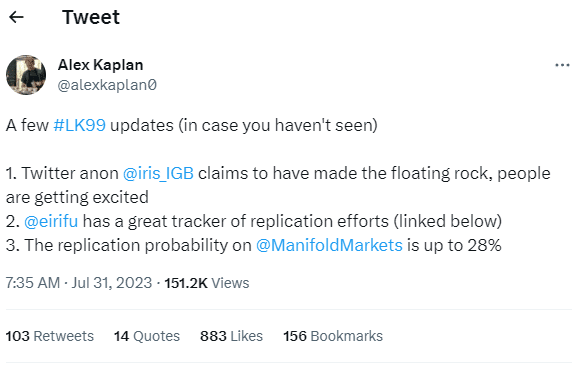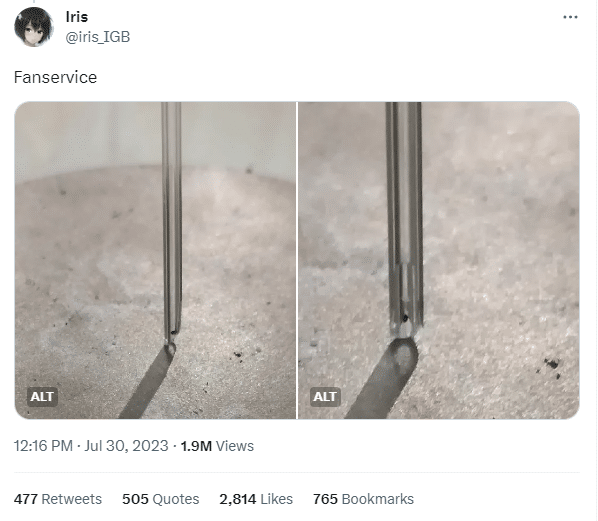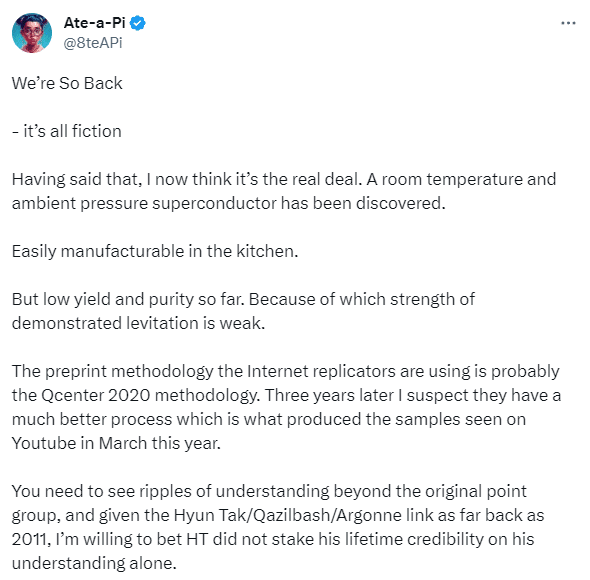If this is true, then we have one of the biggest scientific breakthroughs of the 21st century.
But outside of Twitter, nobody is covering the story, for two reasons.
First: there have been so many false alarms over room-temperature superconductivity over the last fifty years that nobody wants to be the sucker hyping the latest bogus claim.
Secondly, trying to explain how the story itself is incredibly difficult because room temperature superconductivity is just geeky.
So why I am writing about it?
Well, it’s been three days since the paper has been published.
Nobody has disproved the paper, and there are tantalizing reports of progress made by independent labs that are trying to duplicate the process.
One could argue that three days are not enough to prove or disprove the process. And yet:

Well, that’s the compound needed to create the superconducting material.
The South Korean researchers say LK-99 can be made in a baking process that combines the minerals lanarkite (Pb₂SO₅) and copper phosphide (Cu₃P)
And why is a floating rock a big deal?

Because that illustrates the Meissner effect (or Meissner–Ochsenfeld effect), which is the expulsion of a magnetic field from a superconductor during its transition to the superconducting state when it is cooled below the critical temperature. This expulsion will repel a nearby magnet.
(taken from Wikipedia https://en.wikipedia.org/wiki/
The Meissner effect or floaty rocks is not a foolproof way to test for superconductivity, but it’s close.
So we are starting to see pictures of “floaty rocks” on Twitter. Are they bogus? Too soon to tell.
But again, it’s day three and this supposed discovery is being taken very, very seriously.

Stay tuned.
DJ
P.S. There are countless uses for a room-temperature superconductor (as long as it can be manufactured cheaply). It could be used a battery, or making more efficient power lines, and even in building cheaper fusion reactors.
P.P.S. The real reason I wrote this story? The financial markets are flat. Flat like a pancake. Everybody is on vacation, nobody is trading. This story is way more interesting than anything that happened in crypto last week.
